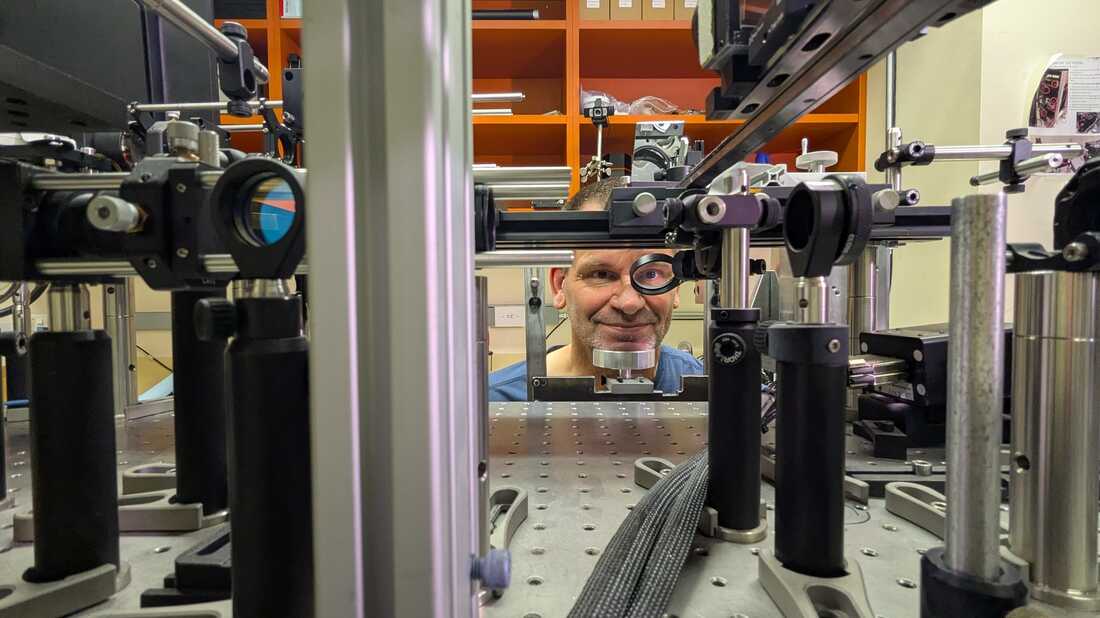Our Terms & Conditions | Our Privacy Policy
The power of olo, a color created by science : Short Wave : NPR
Researcher Hannah Doyle calibrates the AOSLO system prior to an Oz Vision experiment.
Ren Ng
hide caption
toggle caption
Ren Ng
Researcher Hannah Doyle calibrates the AOSLO system prior to an Oz Vision experiment.
Ren Ng
Teal is a greenish, blueish hue. But what if it were more?
Imagine a vibrant teal that’s more saturated than any color you’ve ever seen in the natural world.

A color swatch approximating a less saturated “olo,” a blue-green color. It can only be seen in a specialized lab that uses machines to stimulate only a specific subset of photoreceptors in the human eye.
James Fong
hide caption
toggle caption
James Fong
That’s how a rare few people describe a new color called “olo.” The shade has been seen only by a handful of scientists at the University of California, Berkeley in a paper published in the journal Science Advances last month.
The view is so exclusive because olo does not exist in nature. It cannot be found among paint cans. Rather, olo is created through the intervention of careful computing and lasers.
The research team was led by vision scientist Austin Roorda and computer scientist Ren Ng. Together, they figured out a method for stimulating solely the M cones of the retina, which does not happen outside of a specialized lab. The experiment is called Oz Vision, harkening back to the classic film The Wizard of Oz.
Ng hopes that the technology used bring us closer to Dorothy’s technicolor entrance into the original land of Oz — be it by studying diseases that lead to blindness or by finding ways to make people with colorblindness see full color.

Austin Roorda, professor of optometry and vision science at UC Berkeley, with the Oz system.
James Fong
hide caption
toggle caption
James Fong
Austin Roorda, professor of optometry and vision science at UC Berkeley, with the Oz system.
James Fong
Listen to Short Wave on Spotify and Apple Podcasts.
More questions about the science behind our everyday lives? Email us at shortwave@npr.org.
Today’s episode was produced by Rachel Carlson. It was edited by Rebecca Ramirez. Tyler Jones checked the facts. Kwesi Lee was the audio engineer.
Images are for reference only.Images and contents gathered automatic from google or 3rd party sources.All rights on the images and contents are with their legal original owners.





Comments are closed.